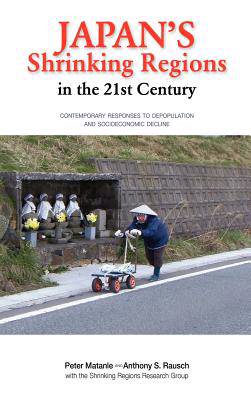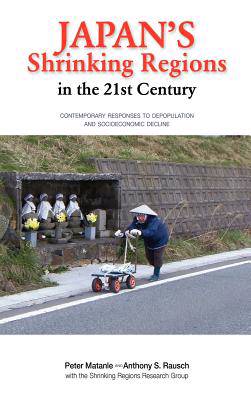
- Retrait gratuit dans votre magasin Club
- 7.000.000 titres dans notre catalogue
- Payer en toute sécurité
- Toujours un magasin près de chez vous
- Retrait gratuit dans votre magasin Club
- 7.000.000 titres dans notre catalogue
- Payer en toute sécurité
- Toujours un magasin près de chez vous
Japan's Shrinking Regions in the 21st Century
Peter C D Matanle, Anthony Rausch, Shrinking Regions Research Group
Livre relié | Anglais
189,95 €
+ 379 points
Description
Japan's population is shrinking. Based on current trends, it will decline by an average of half a million people per year for the next forty years. The country is also getting older and the ratio of dependants to active workers is expected to approach 1:1 by around 2030. These two interdependent processes will bring great changes to Japan in the coming decades. In the twenty-first century, a historic turnaround in global demographic trends will occur. Europe and East Asia are especially vulnerable to demographic shrinkage. Germany is already shrinking, as is Russia. South Korea will begin to shrink soon and, importantly, so will China from around 2035. Overall, this is good news, but it brings with it worldwide changes to ways of living and working. Japan's rural areas have been shrinking for decades. Entire villages have vanished; some have even been "sold." Thousands of municipalities have been judged "non-viable" and merged. Thousands more private and public enterprises have collapsed, leaving colossal debts, while hundreds of thousands of older people live miserable lives in neighbourless communities. Rural shrinkage has been the unseen corollary of Japan's extraordinarily dynamic twentieth century urban expansion; indeed, Japan's postwar economic miracle has been achieved at the expense of rural retreat. Potentially disastrous is the negative-sum game that national depopulation triggers, as one community's gain becomes another's loss. Japan's Shrinking Regions in the 21st Century reveals how communities are responding positively to these emerging circumstances, delivering a message of hope and vitality to shrinking regions worldwide. Setting Japan alongside Europe, and with an epilogue describing the Tōhoku earthquake, tsunami, and nuclear meltdown of 11 March 2011, the book offers policy makers and practitioners up to date advice for community revival born of extensive collaborative fieldwork across the whole Japanese archipelago. Japan's Shrinking Regions in the 21st Century brings together the work of 18 international scholars to present the first comprehensive study of regional shrinkage under Japan's national depopulation. Interspersed throughout with numerous illustrations, the book reveals a richly textured examination of shrinkage at the local level, from which emerges the overall story of Japan's depopulation and its place within the trajectory of world development. This will be an important source for all social science collections, as well as for researchers, policy makers, students, and practitioners with interests in regional development, demography, East Asia, and post-industrial change.
Spécifications
Parties prenantes
- Auteur(s) :
- Editeur:
Contenu
- Nombre de pages :
- 566
- Langue:
- Anglais
Caractéristiques
- EAN:
- 9781604977585
- Date de parution :
- 26-08-11
- Format:
- Livre relié
- Format numérique:
- Genaaid
- Dimensions :
- 152 mm x 229 mm
- Poids :
- 993 g







